
Search Best Hotels in Fanshi
Enter your dates for the latest hotel rates and availability.
Swipe up to view more
Filter by:
Hotel Star Rating
≤2345
Popular Filters
Amazing 4.5+Great 4.0+Good 3.5+Pleasant 3.0+18 hotels in Fanshi for your stay
Choose your travel dates to see the latest prices and deals.
Most Booked
Lowest Price
Closest to Downtown
Highest Rated
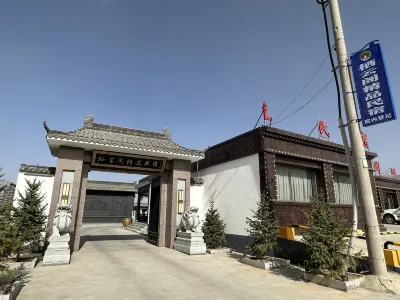


Hotel near Fanshi
GGuest User 2023.10.03
Service: The service was unexpected. The little brother helped plan the route. The most important thing was that they cooperated with Hong Wuji in the ancient city. They didn't have to wait for the table to go directly to eat. This is great 👍🏻! I will consider his home next time I go! recommend
Perfect
35 reviews
4.9/5
Price from
₹ 3,248
per night



Hotel near Fanshi
GGuest User 2024.10.15
The hotel is a luxury hotel in the heart of the city, the overall environment is elegant, comfortable, and the service attitude is very thoughtful. From check-in to check-out, the hotel staff always keep smiling and polite, making guests feel at home. The hotel's rooms are fully equipped, luxuriously decorated, comfortable with comfortable beds, high-end bathing facilities and modern technology equipment. Additionally, the hotel has multiple restaurants and bars offering a wide selection of food and drinks. For guests who need a break, the hotel also offers leisure facilities such as a spa, gym and indoor pool. Overall, the hotel is a quality hotel with excellent service attitude and good hardware facilities to meet various travel and business needs. Overall, this is a highly recommended and patronised hotel for guests looking for a luxurious and comfortable stay.
Perfect
7 reviews
5.0/5
Price from
₹ 1,729
per night

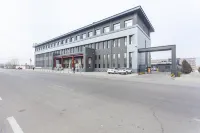
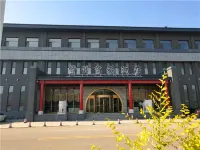
Hotel near Fanshi
GGuest User 2023.12.16
Generally, the living environment is a bit small, the sanitary environment is also general, not as good as the feeling of living before, too old hotel. A lot of lights are not in the room, not worth the price
Very Good
27 reviews
4.0/5
Price from
₹ 1,904
per night

You Might Like
Hotels With BreakfastHotels With Twin RoomHotels With 1 Double BedHotels With Swimming PoolHotels With Free Cancellation



Hotel near Fanshi
GGuest User 2024.08.05
Casually set unexpected surprises, facilities are good, the room is large, I like it, and the decoration style is also very like, there is a disposable toilet, much better than the double price hotel I stayed in Pingyao, breakfast is also delicious, like the north millet porridge.
Outstanding
36 reviews
4.8/5
Price from
₹ 1,157
per night
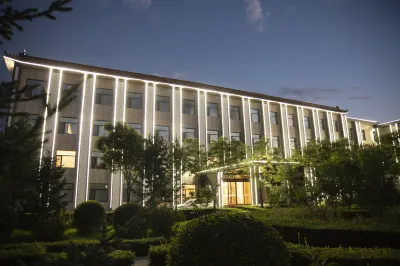

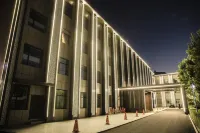
Hotel near Fanshi
GGuest User 2023.10.06
The front desk staff is friendly, the room is clean, the yard is large, parking is very convenient, and the price-performance ratio is high. However, due to the new decoration, there is still some smell in the room. Overall, it is still recommended to stay!
Excellent
48 reviews
4.5/5
Price from
₹ 1,822
per night
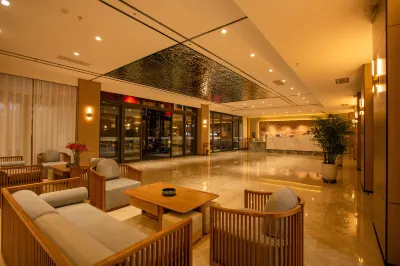
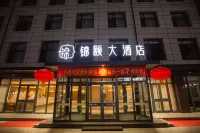

Hotel near Fanshi
GGuest User 2024.05.04
Cost-effective, clean rooms, convenient eating around, Zhao Yiming snacks next to the store. It is very convenient to go to Lushan Scenic Area. It takes 75 minutes to drive to Wutai Mountain. It is to the north gate and there are few people. recommend.
Outstanding
91 reviews
4.6/5
Price from
₹ 1,554
per night



Hotel near Fanshi
GGuest User 2023.08.20
The location and hardware are good. It's not far from Wutaishan Railway Station. You can see the iconic buildings of Hanshan Scenic Area outside the room window. The hotel lobby is grand, the breakfast is rich, and the room is clean. The square across the road opens at 6:30 in the morning. The music was very disturbing, and when we were checking in in the lobby, the two young staff at the front desk missed the check-in information, causing us to wait for a long time without being able to go through the formalities. They were unapologetic afterwards and felt that their professionalism needed to be improved.
Excellent
163 reviews
4.4/5
Price from
₹ 2,617
per night
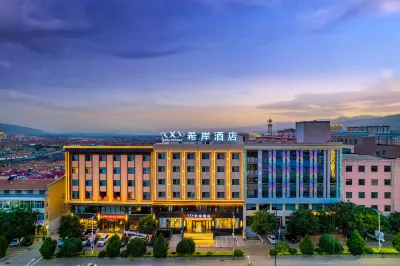


Hotel near Fanshi
GGuest User 2024.09.26
The newly opened hotel this year, the color matching is quite amazing as soon as you enter the lobby. There are local small scenes on each floor, suitable for punching in and taking pictures. The room is spacious and comfortable, and the paintings in the details are very attentive and look very eye-catching. Dinner is eaten in Xiangge Lili near the hotel. The taste of the dishes is very good and the quantity is large. It is recommended.
Outstanding
281 reviews
4.7/5
Price from
₹ 2,313
per night



Hotel near Fanshi
GGuest User 2023.10.03
It is a blind booking without evaluation. The newly opened hotel is near the town center. It is convenient to get on and off the highway. The overall room is clean and tidy. The full set of domestic ”TOTO” bathrooms. There are various small restaurants downstairs and across the road. It is more lively. I went there at 9 o'clock that night. The internal parking lot is a bit crowded. After waiting for a while, there was a reason for bathing in the hotel. I said that there were a few shortcomings. The soundproofing in the hotel was particularly bad. Someone was talking in the middle of the night. The content was clear, the shower leaked, and the floor towel was not provided. Finally, because it was the second day of passing by the accommodation, I had to hurry up and discuss providing simple early. Merchants refused to provide it on the grounds of outsourcing, and it has been 20 years since Trip.com , and this is the first time they have encountered this situation.
Excellent
68 reviews
4.3/5
Price from
₹ 1,706
per night



Hotel near Fanshi
JJiguangxiwao 2023.05.05
賓館女老闆服務態度非常好,房間很大很整潔,而且視野也不錯,能夠看到遠處羣山上的積雪,臨街的房間晚上也很安靜,性價比很高。雖然距離繁峙汽車站稍有一點遠,但是出門走幾步就能打到車。距離繁華的濱河區域也是走路的距離,附近飯館和超市也都很多,所以感覺很不錯的。
Excellent
7 reviews
4.4/5
Price from
₹ 958
per night
Top hotels in Fanshi
See all
Check out these top-booked hotels from the past 30 days!
No.1
4.9/5
24 review繁峙鑫圓祥賓館(迎賓街分店)
Hotel near Fanshi
"Clean and tidy""Great stay!"
Select dates to view pricesNo.2
4.2/5
122 reviewHuaXia Hotel
Hotel near Fanshi
"Clean and tidy""Great stay!"
Select dates to view pricesNo.3
4.4/5
7 reviewFanshi Qingqing Hotel
Hotel near Fanshi
"Good Location"
Select dates to view pricesNo.4
4.7/5
8 reviewYanyang Hotel
Hotel near Fanshi
"Clean and tidy""Friendly owner"
Select dates to view pricesNo.5
4.5/5
47 reviewFanshi Longhe Hotel
Hotel near Fanshi
"Clean and tidy""Great stay!"
Select dates to view pricesNo.6
4.4/5
10 reviewXinshunyu Hostel
Hotel near Fanshi
"Good Location"
Select dates to view pricesNo.7
4.2/5
66 reviewEDIO
Hotel near Fanshi
"Clean and tidy""Great service"
Select dates to view pricesNo.8
4.0/5
46 reviewYunlai Apartment Hotel
Hotel near Fanshi
"Clean and tidy""Great stay!"
Select dates to view pricesNo.9
4.9/5
121 reviewChaotai Inn
Hotel near Fanshi
"Clean and tidy""Great rooms"
Select dates to view pricesNo.10
4.8/5
15 reviewFanzhi Suiyuan Inn (Wutaishan Railway Station)
Hotel near Fanshi
"Clean and tidy"
Select dates to view pricesLatest Reviews for Fanshi hotels
See all
Explore honest ratings and real traveler reviews to help you find the perfect stay.
4.9/5
Perfect
GGuest User雖然沒有毗鄰車站,但是也非常近,走路五分鐘,位置非常安靜,智能化設施,雖然大堂不是富麗堂皇,但酒店房間設施非常好,又新又乾淨又全,老闆太用心了,旅途中大部分需要的都給你備上👍,下次一定還會住這家,下車第一站就是滿滿的開心,盡掃車程中的勞頓。優秀!
4.8/5
Outstanding
GGuest UserEnvironment, sanitation, facilities, everything is fine, and the public bathroom is quite clean. The location is on Xiangyang Road, a relatively prosperous area near the bus station. It is convenient to travel and is suitable for business trips.
4.6/5
Outstanding
GGuest UserSanitary, comfortable, quiet, especially suitable for living with the elderly and children, recommended!
4.6/5
Outstanding
Good location, good bath water, convenient eating (there is a restaurant at the door) 2 bedside latch, one of which is bad, hope to repair.
4.5/5
Excellent
GGuest UserI didn’t come out on May 1st. I was going to Wutai Mountain today. The friend who came out last time came back and told me that this hotel is quite good, because my friend came to Wutai Mountain for the first time. The boss also told them how to go up conveniently and where to pay attention to what, Otherwise, I really don't know where to go after I go up.
4.5/5
Excellent
GGuest UserThe boss is very good, the hotel environment is also very good, the boss is enthusiastic to help contact the car
4.4/5
Excellent
GGuest UserThe room was very clean, the facilities were complete, the boss was very enthusiastic, and there was a feeling of going home. The boss was very enthusiastic to introduce me to the tourist attractions here, where to take the car, where to go up the mountain, so that I had to walk a lot less wronged roads.
4.2/5
Very Good
GGuest UserClean and hygienic.
3.7/5
AAnonymous UserThe hotel environment is convenient for parking, the stay is fast, and the room is more comfortable. The details touched the hearts of people, and a medium hotel also made the details other than the accommodation surprising. When you touch it, what you look at, you will have an unexpected discovery.
3.5/5
AAnonymous UserI feel that the hotel is quite old, the floor of the room is not flat, the sanitary conditions are average, but the price is cheap, the room is not very big, but it is not small, in general, it is generally the same.
Traveller reviews about Fanshi attractions
Discover popular attractions in Fanshi and book a nearby hotel for extra convenience.
Qishan Cultural Tourism Scenic Area
MM34***15It was already National Day when I went. The weather was a bit cold and the wind was a bit big, but it did not affect the scenic spot. It was a niche scenic spot. It was very careful and the performance was great. It was a little bit less food around. It was all barbecue and snacks. It would be better if there were stir-fried dishes.
yan shan si
水水漫三楼Yanshan Temple is located in Tianyan Village at the northern foot of Mount Wutai, 40 kilometers southeast of Fanzhi County, Xinzhou City, Shanxi Province. It was originally called Lingyan Temple. It faces south and covers an area of 8,000 square meters. It was founded in the third year of Jin Zhenglong and rebuilt in the second year of Yanyou in the Yuan Dynasty. It has been repaired frequently. A large number of buildings, natural landscapes, social life, character behaviors, etc. in the Yanshan Temple murals are true reflections of social life at that time, providing precious materials for future generations in architecture, history, politics, etc. In addition, the Yanshan Temple murals The cultural connotation also has a very distinct reflection, fully reflecting the phenomenon of national cultural integration. The large number of Jin Dynasty murals preserved in Yanshan Temple vividly demonstrate the charm of mural art to future generations with their rich and colorful content, grand layout, and evocative connotation. Yanshan Temple has been announced as the second batch of national key cultural relics protection units. The existing building in the temple, the Manjusri Hall, is a relic of the Yuan Dynasty's overhaul, and the rest are relics of the Ming and Qing Dynasties. The large brick Buddhist altar in the Manjusri Hall contains eight statues of Buddha, Bodhisattva, disciples, Vajra, etc., all of which are original works from the Jin Dynasty. The murals preserved on the surrounding walls were painted by Wang Kui, a court painter in the seventh year of Dading in Jin Dynasty. The west wall is filled with Buddhist stories, while the east wall is filled with sutras and Jataka stories. The plots are varied and beautiful, including heaven and earth, palaces and marketplaces, mirages, clouds, mountains, forests and gardens, babies playing, officials, nobles and common people. , which is valuable information for studying religion, architecture and art in the Song and Jin Dynasties. The composition of the picture is rigorous, the writing force is vigorous, the architecture is magnificent and exquisite, the characters are lifelike, the colors are rich, and the techniques are skillful. It is an excellent mural work of the Jin Dynasty.
Gongzhu Temple
渭渭南松赞干布Princess Temple is located in Dongsheng Village, Fanshi County, Xinzhou City, Shanxi Province. It was first built during the Northern Wei Dynasty and rebuilt in successive dynasties. It covers an area of 4,347 square meters and has three courtyards. The main buildings include the mountain gate, the passing hall, the Weituo Hall, the Mahavira Hall, the Jialan Hall, the Horse King Hall, etc. The more valuable ones are the murals and colored sculptures in the passing hall and the Mahavira Hall built in the Ming Dynasty.
Beitai Yedou Peak
亮亮点liangpointNorth Taiding Yunfu Mountainside, Modou Dou, called Yedou Peak, Yedou Peak altitude of 3058 meters, altitude of 3058 meters, is the highest peak of Wutai Mountain peaks, is also the highest point in North China, known as "North China roof ridge". Here is the best location for the scenery of the hinterland of the general view platform.
Binhe Park (Binhe North Avenue Branch)
奔奔跑吧21.0975The Hutuo River flows through here. There is a playground on the north side, and the south side is relatively quiet and suitable for jogging. There are also many green plants on both sides. The night view is also good at night, with many lights, singing and snack stalls on the roadside. It is a good place for citizens to take a walk after dinner.
Mimi Temple
山山西当地向导梁中华The secret temple is located outside the Wutai Mountain Scenic Area, about 60 kilometers away from the Wutai Mountain Scenic Area. There are very few tourists, extremely hidden, and the name is so famous. There is a dragon cave in the back mountain of the monastery. The legend is that it is a Wulong cultivation place with excellent scenery.
FAQs About Hotels in Fanshi
Which hotels in Fanshi offer airport shuttle service?
Not familiar with Fanshi? , Yiyuan Business Hotel and Xi'an Hotel (Xinzhou Fanzhi County Government Store) provide airport transfer services.
What hotel deals are available in Fanshi?
Trip.com offers various events and deals to its users all year round. You can check the deals page to view Trip.com deals.
What are the best hotels with a spa in Fanshi?
Planning a trip? A spa visit can be a wonderful part of your travel experience. , Yiyuan Business Hotel and Xi'an Hotel (Xinzhou Fanzhi County Government Store) provide highly rated spa services.
Which hotels in Fanshi have swimming pools?
, Fengze International Hotel and Fanshi Xinjiale Homestay are hotels with swimming pools. Stay at any of these hotels to enjoy a swimming pool!
Which hotels in Fanshi offer free WiFi?
Whether you are travelling for business or vacation, an internet connection is a must for your trip. , Yiyuan Business Hotel and HuaXia Hotel are popular hotels with free Wi-Fi.
Is Fanshi pet-friendly?
Yiyuan Business Hotel, EDIO and Qi Yun Ge Hotel allow pets. Take your pets with you during your stay!
What are some recommended family-friendly hotels in Fanshi?
Qi Yun Ge Hotel and Qiaojia Hotel (Wutaishan Railway Station Branch) are very suitable for family travel. Enjoy your trip with all the family!
Which hotels in Fanshi have fitness facilities?
, Yiyuan Business Hotel and Xi'an Hotel (Xinzhou Fanzhi County Government Store) provide fitness facilities. Satisfy your fitness needs even while traveling!
Which hotels in Fanshi provide high-quality breakfasts?
Fengze International Hotel,Yiyuan Business Hotel and Xi'an Hotel (Xinzhou Fanzhi County Government Store) provide high-quality breakfast. Start your day with delicious breakfast!
What is the average hotel price in Fanshi?
For hotels in Fanshi, the average price on weekdays is ₹ 1,869, the average price on weekends (Friday–Saturday) is ₹ 1,880.
What are the most popular hotels in Fanshi?
Fanshi has many popular hotels. Whether you're traveling for business or going on a vacation, , Yiyuan Business Hotel and Xi'an Hotel (Xinzhou Fanzhi County Government Store) are preferred hotels.
Hotel Information for Tourists
| Highest Price | ₹ 8,037 |
|---|---|
| Lowest Price | ₹ 467 |
| Number of Reviews | 5,878 |
| Number of Hotels | 166 |
| Average Price (Weekdays) | ₹ 1,869 |
| Average Price (Weekends) | ₹ 1,880 |
Keep Exploring
Most Viewed Hotels
More Accommodation Types
Pet friendly Hotels in FanshiFamily-friendly Hotels in FanshiHotels in Fanshi With Wi-FiHotels in Fanshi That Provide Airport TransfersHotels in Fanshi With BarsHotels in Fanshi With BreakfastHotels in Fanshi With GymsFanshi Homestays4-Star Hotels in Fanshi3-Star Hotels in Fanshi2-Star Hotels in FanshiGreenTree Inn Hotels in FanshiJunyi Hotels in Fanshi